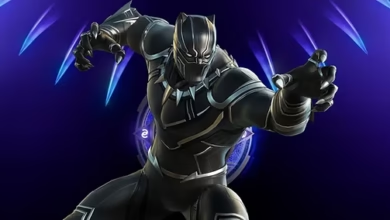
Introduction Of Ghost of Yotei
In 2020, Ghost of Tsushima captivated players with Jin Sakai’s struggle between samurai honor and survival. Five years later, Ghost of Yotei builds on that foundation while forging its own identity through a new protagonist: Atsu, a wandering mercenary driven by vengeance. Set in the early 1600s during the turbulent dawn of Japan’s Edo period, Ghost of Yotei is both familiar and refreshingly distinct—a tale shaped by loss, revenge, and the haunting beauty of Feudal Japan.

Table of Contents
A Protagonist Forged in Vengeance
Unlike Jin Sakai, Atsu is not a samurai but an outcast. Her family was slaughtered by the Yotei Six, a brutal gang that rules the northern island of Ezo (modern-day Hokkaido). Branded by tragedy and stripped of any societal standing, Atsu carves her own path forward, embracing the mantle of the onryō—a vengeful spirit from Japanese folklore.
Her journey is raw, personal, and uncompromising. While Jin struggled with the moral cost of dishonor, Atsu is defined by survival and retribution. This shift in perspective sets the tone for the game, making her story more grounded yet equally cinematic. Ghost of Yotei
Cinematic Storytelling with a Samurai Cinema Heart
Ghost of Yotei draws heavy inspiration from classic Japanese cinema. The influence of Akira Kurosawa and Masaki Kobayashi is clear in its visual style and storytelling, while Toshiya Fujita’s Lady Snowblood is echoed in Atsu’s relentless pursuit of vengeance.
After years honing her skills as a mercenary, Atsu returns home to confront the Yotei Six. Their leader, Saito, has declared himself “Shogun of the North,” commanding legions of soldiers. Against such power, Atsu’s lone path of revenge seems impossible—yet her transformation into a feared legend keeps players hooked from the opening act to its final duel.
The narrative is enriched by Atsu’s deep ties to her family. Through flashbacks and interactive memories, players witness her bond with her brother and father, making her loss—and her vengeance—all the more impactful.
Exploration That Feels Alive
Ezo is brought to life with stunning artistry and attention to detail. From cherry blossom groves to snow-blanketed mountains, the island is a land of contrasts. Villages bustle with fishermen and musicians, while the wilderness teems with wildlife.
Exploration feels organic thanks to the return of the Guiding Wind mechanic, which replaces traditional waypoints with subtle environmental cues. A new spyglass system encourages careful observation, rewarding curiosity with new locations and discoveries.
Side activities—from bounty hunts against unique foes to spiritual encounters tied to Atsu’s family—add depth to the world. Unlike Ghost of Tsushima’s meditative haikus, Atsu’s identity is expressed through sumi-e painting and playing the shamisen, connecting her to her homeland and ancestry.
Combat: Brutal, Flexible, and Stylish
Combat in Ghost of Yotei expands on the foundations of its predecessor with Atsu’s pragmatic, no-rules approach. Instead of rigid stances, players master five melee weapons: katana, odachi, dual blades, yari spear, and kusarigama. Each has strengths and weaknesses, encouraging dynamic weapon switching mid-fight.
Ranged combat also evolves, with early firearms like the Tanegashima rifle and flintlock pistol adding new tactical layers. Atsu’s fragility makes every duel tense, demanding precision in blocking, parrying, and dodging.
Stealth, meanwhile, is faster and more visceral—focused less on avoiding detection and more on eliminating enemies with ruthless efficiency. Assassinations flow seamlessly, and the kusarigama’s ability to drag enemies into the shadows is particularly satisfying.
Mission Variety and Worldbuilding
The Yotei Six are compelling antagonists, each distinct in personality and design. Whether storming the Oni’s fortress or unraveling the Kitsune’s shinobi network, missions feel cinematic and varied. Side quests offer equally memorable encounters, from confronting yokai-inspired killers to engaging with Ainu traditions.
While some bounties fall into generic patterns, most side content enhances Atsu’s legend, fleshing out both her character and the world she inhabits.
Technical and Visual Excellence
As expected from a Sony first-party release, Ghost of Yotei shines technically. The game runs at a stable 60fps on PS5, with cinematic widescreen framing during horseback travel showcasing its breathtaking landscapes. The art direction emphasizes vibrant colors, swirling particles, and dynamic weather, making every moment feel painterly and alive.
Verdict
Ghost of Yotei builds upon Ghost of Tsushima while carving its own path with a new protagonist, deeper exploration, and more versatile combat. Atsu’s journey is a gripping tale of revenge, elevated by emotional storytelling, cinematic presentation, and a world that feels both beautiful and brutal.
This isn’t just another samurai epic—it’s a story about survival, legacy, and the human cost of vengeance. Ghost of Yotei proves that the mask of the Ghost may endure, but the soul behind it changes everything.
Score: 9/10 – A masterful evolution of the Ghost saga.





